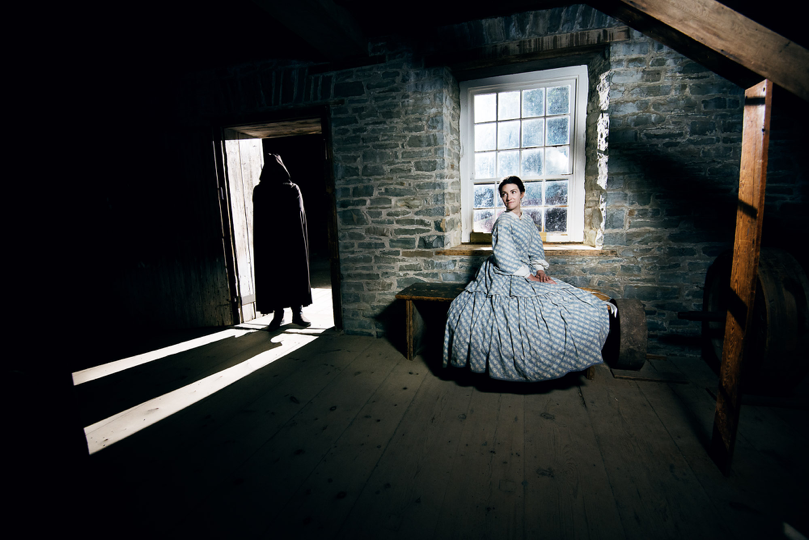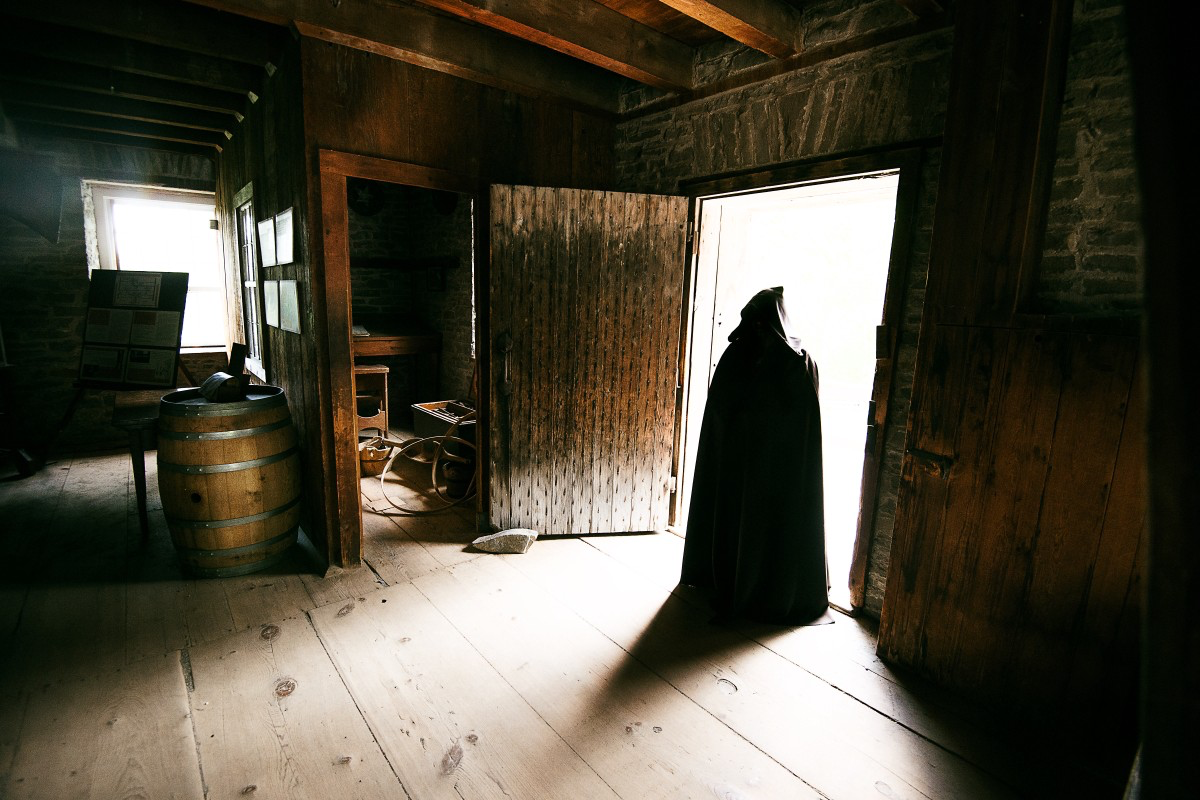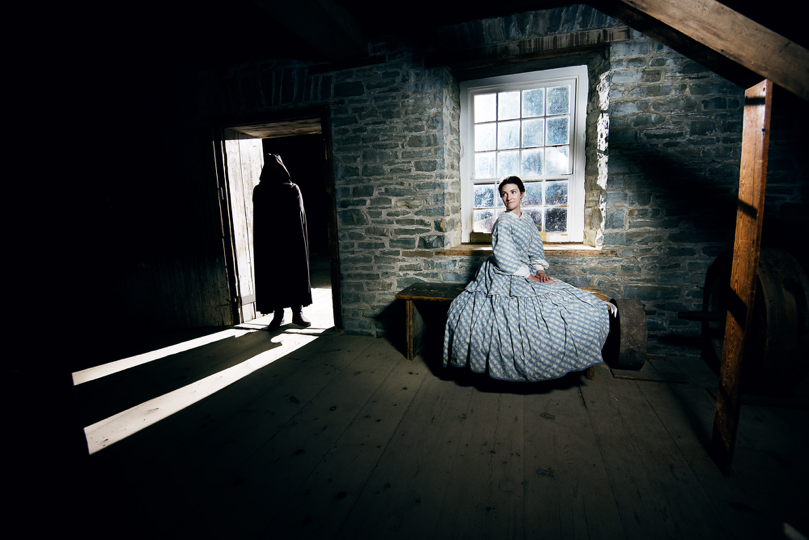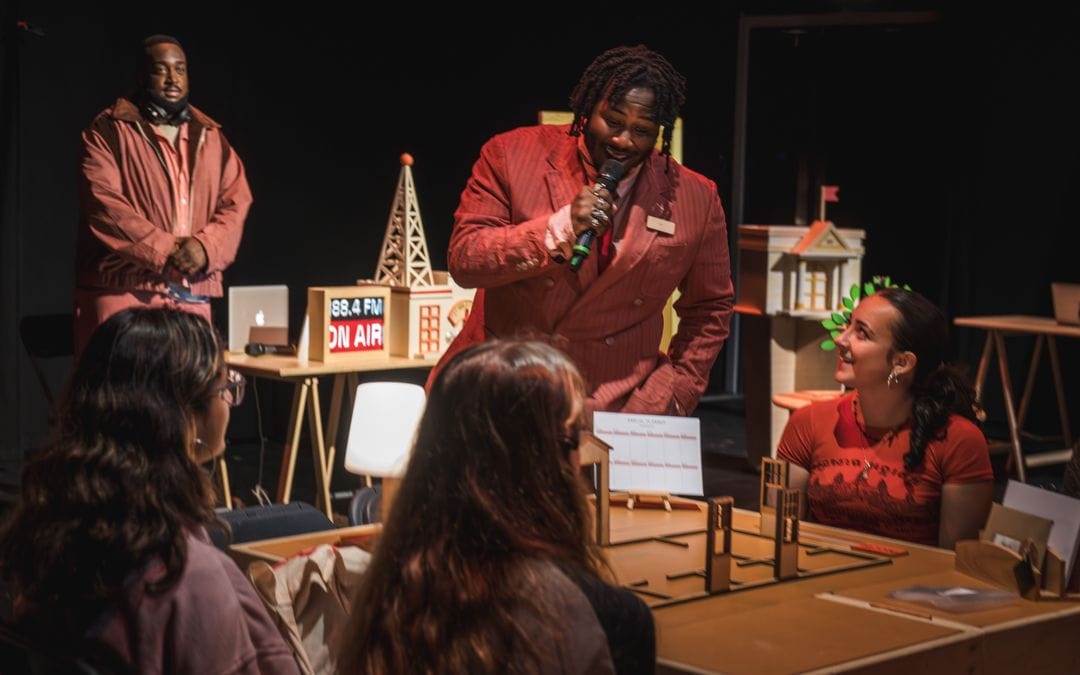
You find yourself in a quaint historic village reminicent of 19th-century Ontario. But this is no ordinary village. This is one haunted by a mysterious curse. And as darkness falls, you realize that there are masked cultists lurking here, attempting to awaken an ancient evil. And only you can stop them by solving the puzzles in time and unraveling the mystery of the curse. That’s the premise of Secret City Adventures’ Where Dark Things Dwell, a large scale immersive escape game that is currently running at the historic Black Creek Pioneer Village in Toronto.
We spoke with Secret City Adventures’ Creative Director Michael Keenan to learn more.
No Proscenium (NP): Can you tell us a little about yourself, your background, and Secret City Adventures?
Michael Keenan (MK): Founded in 2012, our mission is to design immersive experiences that push the boundaries of adventurous entertainment. Blending fact with fiction and theatre with gaming, these immersive escape rooms include casts of actors and full theatrical production sets. We are pioneers of creating theatrical escape room games in Toronto, including the Casa Loma Escape Series, Black Creek Pioneer Village Escape Series, and the official Murdoch Mysteries escape room.
NP: What, in a nutshell, is Where Dark Things Dwell about?
MK: Where Dark Things Dwell is an escape-style game taking place outside throughout Black Creek Pioneer Village, playable by up to 60 people at once. Stop by the sleepy village of Black Creek for a night’s rest, and you and your fellow travellers will find yourselves trapped as strange cultists working to awaken an ancient evil force. Where Dark Things Dwell explores how you and your fellow travellers will stop the cultists’ curse. You must save the remaining villagers and discover the great incantation to stop the evil from rising and escape the village before the final bell tolls…. Do you dare to go where dark things dwell?

NP: So is this immersive theatre or an escape room or both?
MK: It is closer to an escape room than a theatre piece. The goal of our projects is to always center the player as the main character of the story, and that means making sure that the activities of watching performers or listening to a narrative don’t overshadow the action and agency that is center around the player.
In Where Dark Things Dwell, you meet new characters, but in some ways they can be likened to video game NPCs — their purpose is to draw you into a world, and then guide and support you as you save the day through puzzles and other challenges.
NP: What inspired the team to create this experience?
MK: The year before launching Where Dark Things Dwell we produced a seasonal game called Lost & Found In Chinatown, which incorporated a downtown Toronto neighbourhood with an escape room and had three teams playing it simultaneously. When the incredible opportunity to create a game in an entire pioneer village came up we saw it as a perfect opportunity to blend the immersive elements of the historic-based escape experiences we designed for Casa Loma with the larger scale/open-world feeling of the short-run projects we had been experimenting with, like Lost & Found. We also wanted to challenge ourselves to create another game with multiple teams playing simultaneously and something that could be replayable. With every new project we take on we like to challenge ourselves as designers with something we’ve never done before, while also building on our previous experiences.
NP: How is Black Creek Pioneer Village incorporated into the experience?
MK: We wanted to strike a balance between dazzling players with a sprawling immersive environment without overwhelming them with too much history. Of course, part of the experience is self-guided and allows players to roam sections of the village in search of clues, allowing them access to a complete 360-degree immersive environment. Other touches are more subtle — puzzles might include reference to the Stong family, who were the occupants of the houses around which the museum was later constructed.
Our favorite means by which players access the environment is through tactile materials. Props are constructed largely of wood, metal and paper for an antiquated feel, and different sets of puzzles evoke moods via tactility. For example, the Weaver’s House space involves felted wool puzzle pieces, players work on real slates in the Schoolhouse, and the feeling of the Leatherworker’s Shop goes without saying.

NP: What kinds of choices can the participants make while playing Where Dark Things Dwell? How replayable is the game?
MK: For the most part, the flow of Where Dark Things Dwell follows a typical escape game. You are directed into different areas of the village to solve puzzles that will allow you to progress through the game. At a certain point, you are free to roam within the bounds of your map on a sort of large-scale scavenger hunt to find pre-placed clues.
Even with the relatively linear framework, however, there are design choices that allow for a unique experience. The village contains ten primary locations, each with unique puzzle sets, and players only see two during a typical game. This engineers an experience at the end of the game where players can swap stories about the unique village residents they met and the different kinds of challenges they had to work through.
This also means that the game is replayable for those interested in exploring the other spaces. I’m pleased to say that we’ve seen plenty of people return to play the game twice, and some even for a third time!

NP: How are you designing around audience agency, consent, and safety in Where Dark Things Dwell, especially given that up to 60 people can participate?
MK: One thing that sets us apart from traditional escape rooms is our focus on the safety, inclusion, and immersion that live performers can create in a space. In all of our experiences, we eschew the conventional CCTV and hint button in favor of an in-world character guiding your adventure. This is a common practice in most immersive theatre, but specifically in a game environment, having that presence of authority helps keep people on track.
There are two factors specific to Where Dark Things Dwell that needed to be addressed from a safety and consent perspective. The first is, as you mentioned, that the game tops out at 60 players. By splitting the players into teams, the game introduces a light competition element that helps drive the action — especially useful when you are wandering a darkened village and don’t have time clocks to urge you on. This also allows the performers to more effectively monitor the players and ensure they are enjoying a safe and pleasant game.
The other key factor is that the game includes some frightening themes and moments. Fear is a complicated emotion to bring into immersive spaces for a few reasons. Many people’s desire to feel scared can shift rapidly across the event — someone who shows up looking for a spooky game may change their tune halfway through. Fear can also elicit visceral responses in players, who may respond aggressively without meaning to. This has been a challenge, and our response framework has had to develop over time to meet them. We’re always adjusting to find better and safer ways to introduce fear into the game environment.
NP: What’s the audience response been like so far?
The audience response to Where Dark Things Dwell has been very positive. What surprised us the most was the number of people who came to Where Dark Things Dwell having never played an escape game before! We had pegged this experience as something catering to immersive enthusiasts or escape room fans — and plenty of those people have come to play this game — but what surprised us the most were the families, birthday parties, bachelorettes and corporate teams that have come to play who have had the chance to develop an appreciation for immersive design.
NP: Who is the ideal player for this experience?
We host players of all experience levels from novice to enthusiast, ages 10+ with a parental advisory for ages 10–14.
NP: What do you hope participants take away from the experience?
We hope participants leave all of our experiences with a renewed sense of curiosity and adventure, but also that their interest is piqued in the real history behind the heritage buildings they explored during the game.
Where Dark Things Dwell is currently running in Toronto. Tickets are $42 for adult, $35 for students.
NoPro is a labor of love made possible by our generous Patreon backers. Join them today!
In addition to the No Proscenium web site, our podcast, and our newsletters, you can find NoPro on Twitter, Facebook, YouTube, Instagram, in the Facebook community Everything Immersive, and on our Slack forum.
Office facilities provided by Thymele Arts, in Los Angeles, CA.




















Discussion